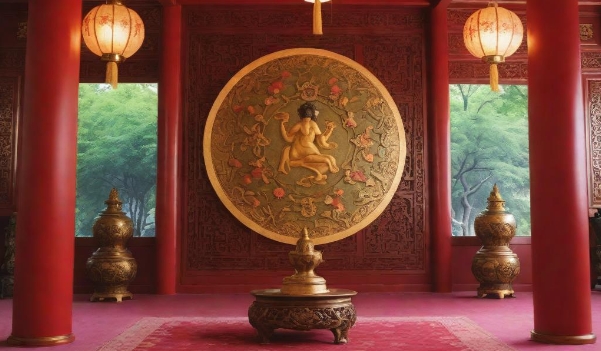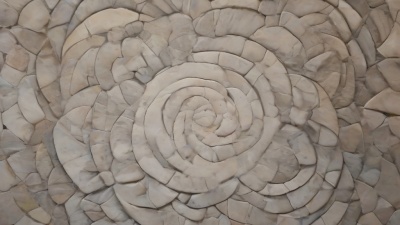1. Basic Relationship
I ching and Feng shui comes from ancient Chinese art and means harmonizing the environment according to the principles of i-ching. Feng Shui directly translates into English as “wind and water”. But what it actually means is the principle that everything is interconnected and undergoes constant change, a principle deeply rooted in Chinese thinking. This practice involves understanding the flow of life energy and achieving balance and harmony within the environment.
The I Ching, or Book of Changes, is an ancient Chinese divination tool that offers insights into the cosmic and moral order, illustrating the dynamic interplay of yin and yang.

2. Fengshui Principles
The key principles of Yin and Yang in Feng Shui for achieving balance in spaces revolve around the concept of balancing two opposing yet complementary forces: Yin and Yang. Yin is associated with the passive, calm, nurturing energy, characterized by its association with rest, darkness, tranquility, and slow movement. It is often described as earth energy that encourages expansion, flow, relaxation, and adaptability. On the other hand, Yang symbolizes the active, vibrant, assertive energy, linked to masculinity, vibrant energy, activity, brightness, heat, dryness, and speed.
To achieve harmony in living spaces through Feng Shui, it is crucial to understand and apply the balance between these two energies. This involves incorporating both Yin and Yang elements into the environment. For instance, balancing a yang-heavy room could involve adding yin elements such as soft lighting, plants, and curved furniture to create a harmonious balance. Moreover, the concept of Qi plays a central role in Feng Shui, as it is the life force or energy flow that flows smoothly and harmoniously within a space. In practice, achieving balance between Yin and Yang involves strategic use of colors, materials, and spatial arrangements. Brighter colors are considered Yang, while dimmer colors are Yin. So, incorporating natural elements and ensuring a clear flow of movement within a space can help maintain this balance.

3. Practical Tips for Feng Shui Improvement
There are several key steps involved in improving Feng Shui first clearing and organizing your space to clear the flow of energy. Here’s the quickest and easiest way:
Clean Windows Regularly: Clean windows are essential for allowing natural light and air to flow freely into your home, which is fundamental in Feng Shui practices. Regular cleaning ensures that the eyes of your home remain clear, facilitating the free movement of energy.

Maximize Natural Light: Ensure that your windows are not covered with heavy curtains or blinds that block natural light. Remove Clutter: Clutter can significantly hinder the flow of energy in your home. This includes decluttering storage spaces and using storage solutions that hide clutter while creating a sense of order.
Organize Your Space: Organize your living space by displaying only accessories and objects that hold personal significance. These items act as ‘energy anchors,’ promoting a sense of harmony and balance within your home.
Consider the Five Elements: When organizing and decorating your home, consider the five elements of Feng Shui: wood, fire, earth, metal, and water. Using the right colors and incorporating elements that represent these five categories can help achieve balance and harmony.
Use Clear Storage Solutions: Clear storage boxes and solutions can help maintain clarity and organization in your home. Sage Burning for Cleansing: For deeper cleansing, consider opening your doors and windows and burning sage as you walk around your home. This practice is believed to remove negative energy and invite positive energy into every corner of your home.
To improve the quality of your living space in a deeper way, you need to apply the insights of I-ching to Feng Shui. First, you must be familiar with the sixty-four hexagrams of I ching. They represent various aspects of life and can provide guidance on how to balance the differences in the family. Elements provide guidance. Each hexagram is composed of a combination of yin (dashed line) and yang (continuous line), reflecting the fundamental duality of the universe. You can find detailed theoretical and practical methods in this article of mine:
4. Historical and Philosophical Context
Historical Development: Feng Shui’s development during the Zhou Dynasty (770-475 B.C.) was significantly influenced by Taoist philosophers who integrated knowledge from the I Ching into their practices. Luopan Compass: The Luopan compass, an essential tool in Feng Shui, was also associated with the I Ching during the Zhou dynasty. Emperor Shing combined knowledge of the compass with that of the I Ching, highlighting the integration of these two ancient Chinese traditions.

Philosophical Foundations: The I Ching is considered the root of Chinese philosophy and has been foundational to both Confucianism and Daoism (Taoism). Its significance is comparable to that of other ancient texts, underscoring its profound impact on various aspects of Chinese culture, including Feng Shui.